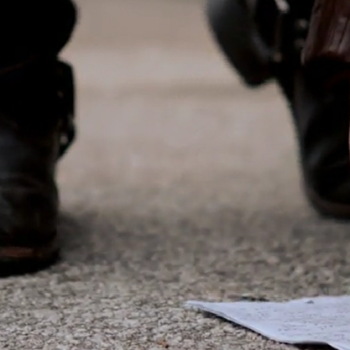I remember when I was little–this would have been the late 1950s when television sets were still novelties–my parents would have friends over for dinner. Afterwards, the adults would all gather around the piano, with my mother playing, and they would all sing. I recall going through the mountain of sheet music that my mother had bought over the years. Lots of big band and what are now labeled “standards,” but also boogie-woogie, jazz, and blues. I should have realized how cool she was.
Readers of old books will notice how people way back then entertained themselves home-grown concerts in the parlor. And Patrick O’Brian
got the period detail just right, as he usually did, when he has Captain Jack Aubrey playing the violin with Stephen Maturin on cello as a way to relax before a big sea battle. In the 19th century, people would go to concerts, but they would often take a copy of the score with them. Through the first half of the 20th century, songwriters made most of their money not from recording royalties but from sales of sheet music, such as my mother would buy.
Charles Rosen, in Freedom and the Arts: Essays on Music and Literature , points out that most classical music was written for people to play, not just to hear. In a review, book critic Michael Dirda makes his point:
, points out that most classical music was written for people to play, not just to hear. In a review, book critic Michael Dirda makes his point:
In several essays Rosen emphasizes how much of our older serious music was never meant to be presented in a concert hall. Most of the early keyboard repertoire was intended for private or semi-private delectation. “Only two of Beethoven’s thirty-two piano sonatas were played in Vienna in public during his lifetime.” Similarly, “Few members of the musical public today know that if we wish to experience Schubert’s song cycles as Schubert’s contemporaries would have heard them, we must imagine them as being sung to a few friends.” Certainly the deepest pleasure of music derives from an engagement with its making, by working through a printed score. One might argue that Bach’s “Art of Fugue” gives more satisfaction to those who play it than to those who hear it.
As Rosen stresses, up until the 20th century, many people in a concert audience would have learned a musical instrument, usually the piano, and thus might have already played the program on their own. Even symphonies were widely available in piano reductions for four hands. Such listeners were consequently grounded in an active understanding of the score. Alas, “learning to sing and learning to play the piano have been supplanted today by collecting records.” In short, a once-informed audience has gradually been displaced by those who fetishize virtuoso performances but don’t actually understand or fully appreciate the music.
via Charles Rosen, ever refining our approach to the arts of the past – The Washington Post.












